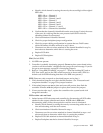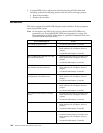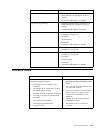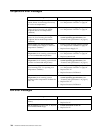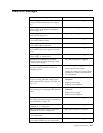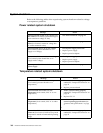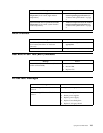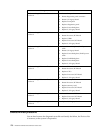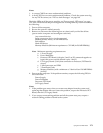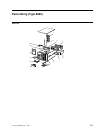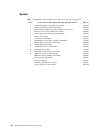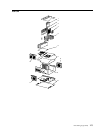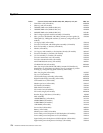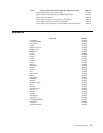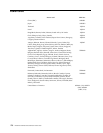Symptom-to-FRU index 171
Notes:
1. A corrupt CMOS can cause undetermined problems.
2. A faulty I2C Bus can cause undetermined problems. Check the system error log
for any I2C Bus errors; see “I2C bus fault messages” on page 169.
Check the LEDs on all the power supplies, see“Power supply LED errors” on page
154. If the LEDs indicate the power supplies are working correctly, return here and do
the following:
1. Power-off the computer.
2. Be sure the system is cabled correctly.
3. Remove or disconnect the following (one at a time) until you find the failure
(power-on the computer and reconfigure each time).
Any external devices
Surge suppressor device (on the computer)
Modem, printer, mouse, or non-IBM devices
Each adapter
Hard disk drives
Memory-Modules (Minimum requirement = 512 MB (4x128 MB DIMMs))
Note: Minimum operating requirements are:
a. 1 Power Supply
b. Power Backplane
c. Processor/PCI Board (with pins 2 and 3 on J23 connected together to
bypass the power switch; default is pins 1 and 2)
d. I/O Legacy Board (Verify that connection to Processor/PCI Board is
secure.)
e. 1 Microprocessor and VRM
f. 3 Terminator Cards
g. Memory Modules (with a minimum of 1 bank of four 128 MB DIMMs
(4x128))
4. Power-on the computer. If the problem remains, suspect the following FRUs in
the order listed:
Power Supply
Power Backplane
Processor/PCI Board
I/O Legacy Board
Notes:
1. If the problem goes away when you remove an adapter from the system, and
replacing that adapter does not correct the problem, suspect the Processor/PCI
Board, then the I/O Legacy Board.
2. If you suspect a networking problem and all the system tests pass, suspect a
network cabling problem external to the system.



